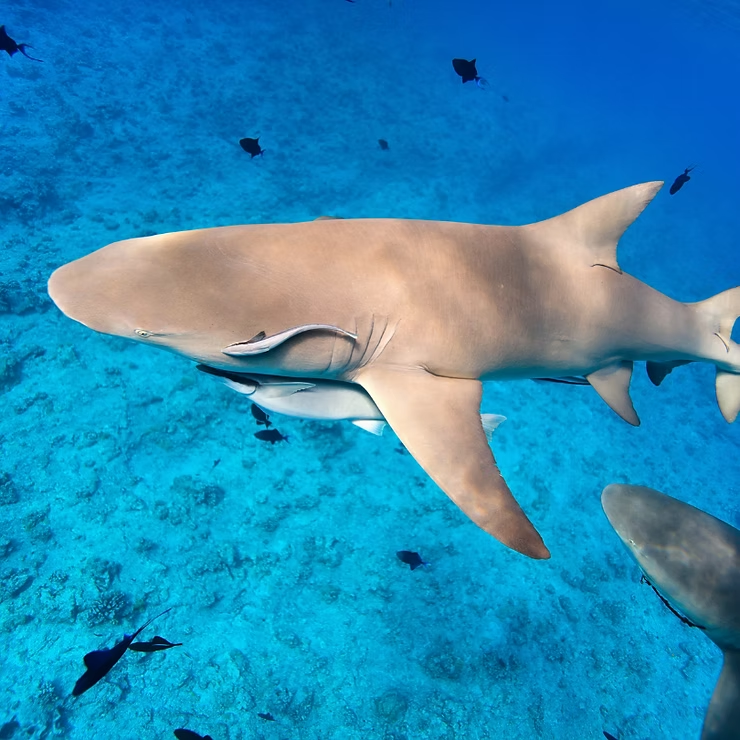Introduction
The Lemon Shark is a medium-sized shark known for its yellowish-brown coloration and presence in coastal waters. Recognized for its social behavior, adaptability, and unique reproductive habits, the Lemon Shark plays an important role in marine ecosystems.
Appearance
Lemon Sharks can grow up to 11 feet long. They have a streamlined body, rounded snout, large eyes, tall dorsal fin, and broad pectoral fins. A distinctive yellow patch on their belly helps distinguish them from other species. Their serrated teeth, arranged in multiple rows, are ideal for catching and tearing prey.
Habitat
These sharks inhabit coastal and estuarine waters of the western Atlantic, from New Jersey to Brazil. They prefer shallow, tropical, and subtropical areas such as mangroves, coral reefs, and seagrass beds. Lemon Sharks can tolerate varying salinity levels and occasionally migrate to deeper waters.
- Coastal waters, mangrove swamps, coral reefs
- Shallow estuaries and brackish areas
- Migrations of over 1,000 miles observed
Diet
Lemon Sharks are opportunistic predators feeding mainly on fish like mackerel, snapper, and tuna, as well as crustaceans and cephalopods. They often hunt in groups and use their serrated teeth to tear large chunks from prey.
- Primary diet: bony fish
- Also eat crustaceans and mollusks
- Hunt in groups for greater efficiency
Behavior
Lemon Sharks are curious and bold, often approaching divers. They are social animals, forming loose schools, especially during mating season. Their ovoviviparous reproduction involves embryos developing inside the mother, who gives birth to live young in shallow nursery areas.
Reproduction
Mating involves males using claspers to transfer sperm, which females can store for months before fertilization. Gestation lasts 10–12 months, and pups are born fully independent, equipped with teeth for hunting. Females reproduce slowly, with a small number of pups every 2–3 years.
Threats
- Overfishing and bycatch in commercial operations
- Habitat loss due to coastal development and pollution
- Climate change affecting temperature and prey availability
Conservation
- Marine Protected Areas (MPAs) to safeguard populations
- Research and monitoring of behavior, migration, and populations
- Educational programs to promote awareness and sustainable practices
Interesting Facts
- Named for their yellowish-brown color resembling a lemon
- Can grow up to 11 feet long and weigh around 400 pounds
- Adaptable to freshwater, brackish, and saltwater
- Lifespan of 25–30 years
- Social and form schools
- Detect weak electrical signals from prey
Conclusion
The Lemon Shark is a remarkable coastal predator with unique behaviors, social structures, and reproductive strategies. Despite its intimidating appearance, it is relatively docile toward humans. Conservation efforts are vital to protect this species and maintain the balance of marine ecosystems.

